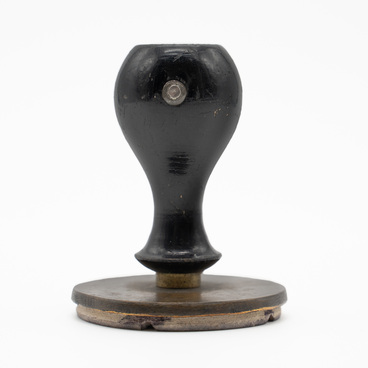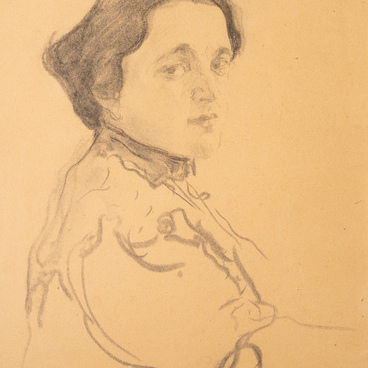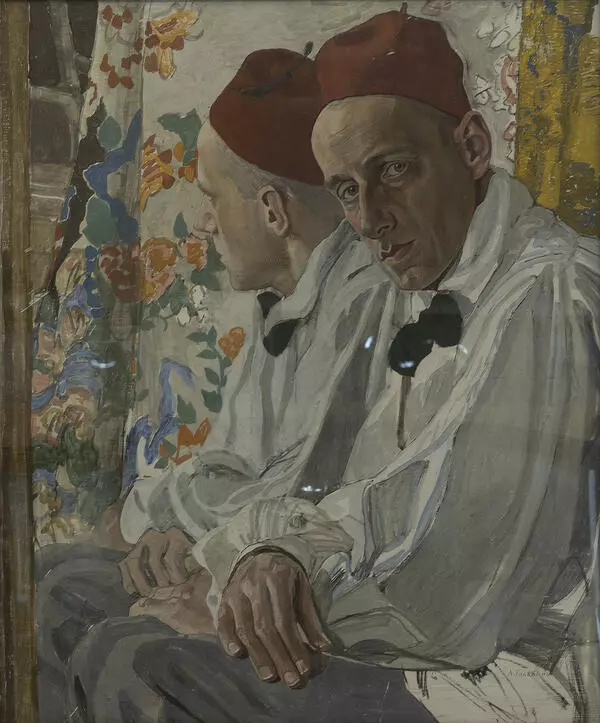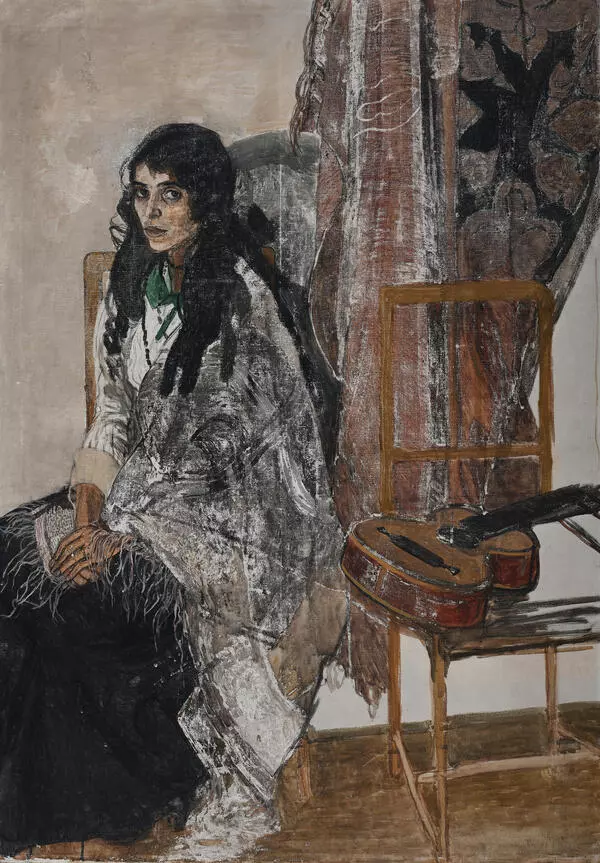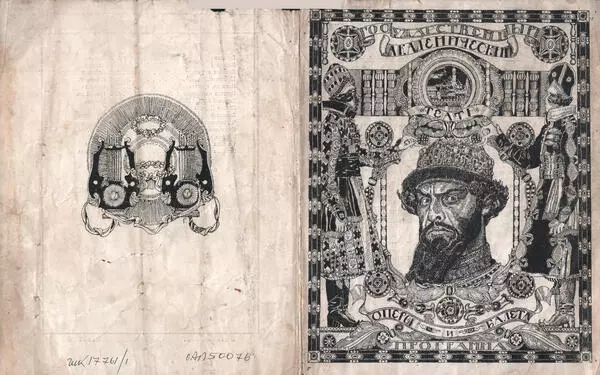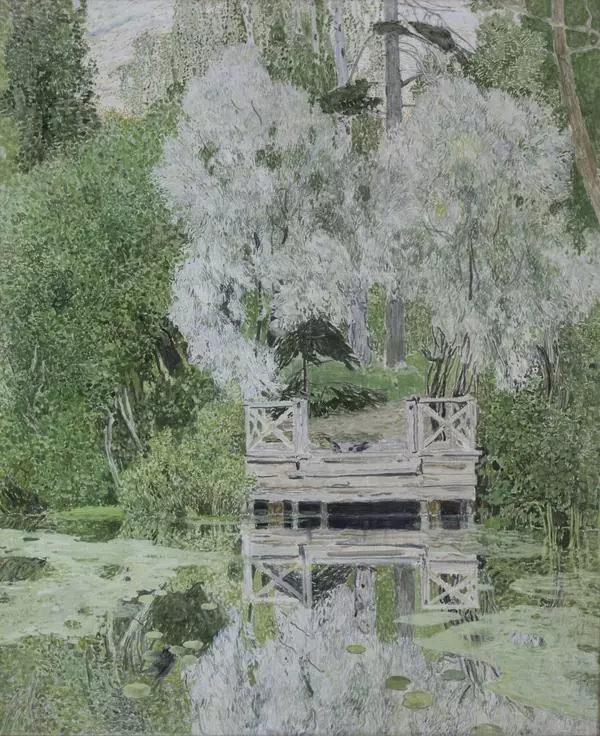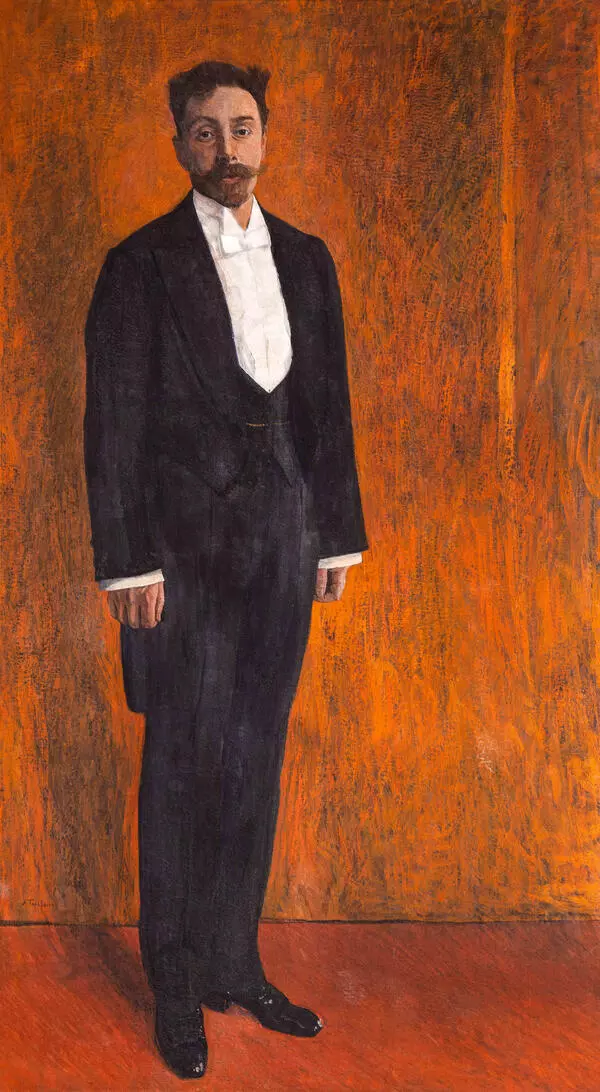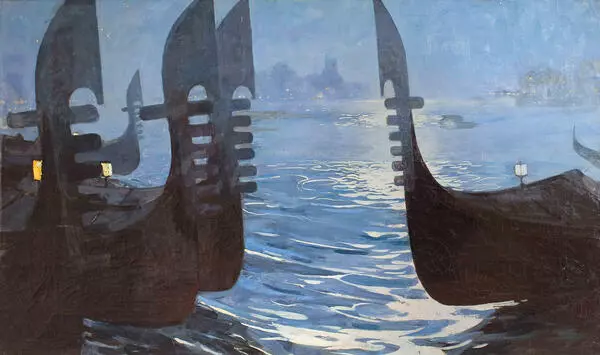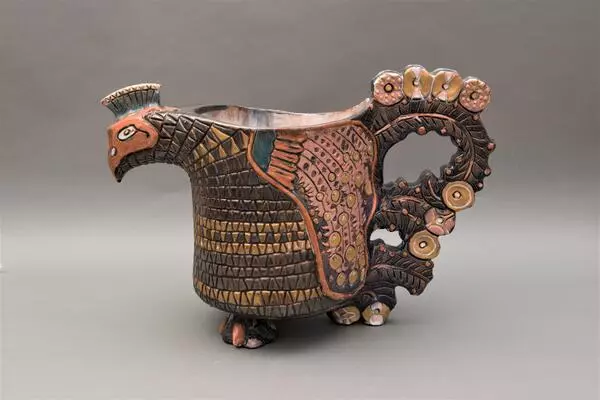Abramtsevo was an artistic and cultural community that gathered around Savva Ivanovich Mamontov, known among his contemporaries as “Savva the Magnificent” and “the Moscow Medici”. The Abramtsevo Art Club helped to reveal the artistic potential of such painters as Konstantin Korovin, Valentin Serov, and Viktor Vasnetsov. Painters, performers, actors, and all creative individuals aspired to come to Abramtsevo, where they could take part in home performances, draw, compose, and play music.
The cozy atmosphere of the Abramtsevo house is revived in the old Moscow mansion that belonged to Feodor Chaliapin. The rooms feature carved wooden furniture, shimmering majolica, beautiful paintings, and the sounds of music. The exhibition houses the majolica plate “Firebird”, made according to a sketch by Alexander Golovin. The plate has the shape of an ellipse and a high rim along the edge. In the center, against a deep-blue sky scattered with stars, there is a Firebird sitting on a fruit-laden tree. Closer to the rim, there is a floral and geometric pattern with triangles and crescents. On the top of the rim, there is a half-erased inscription “S. I. Ma’s Name Day”.
The inscription indicates that the plate was presented to Savva Mamontov on his name day. On the lower edge of the plate, there are faintly visible Cyrillic letters — “a” and “little yus”. In the modern alphabet “little yus” has been replaced by the letter “ya”. The letters are the initials of the person who made the dedicatory inscription — Alexander Yakovlevich Golovin.
Alexander Golovin was an outstanding artist, one of those who shaped the development of Russian art in the late 19th — early 20th century. He became the most prominent representative of the Russian Silver Age. Golovin was a painter, draftsman, and set designer and was considered a master of decorative arts. His art exemplifies the stylistic features of Symbolism and Art Nouveau in Russia. Golovin’s chief focus was the theater, where he reformed the art of scenic design. His set designs, theatrical portraits, landscapes, and still lifes are distinguished by a unique Golovin style — ornate in a sophisticated and whimsical way, brilliantly imaginative, picturesque, and vibrant. The pottery made by Golovin or according to his sketches forms an integral part of Abramtsevo’s artistic image.
The cozy atmosphere of the Abramtsevo house is revived in the old Moscow mansion that belonged to Feodor Chaliapin. The rooms feature carved wooden furniture, shimmering majolica, beautiful paintings, and the sounds of music. The exhibition houses the majolica plate “Firebird”, made according to a sketch by Alexander Golovin. The plate has the shape of an ellipse and a high rim along the edge. In the center, against a deep-blue sky scattered with stars, there is a Firebird sitting on a fruit-laden tree. Closer to the rim, there is a floral and geometric pattern with triangles and crescents. On the top of the rim, there is a half-erased inscription “S. I. Ma’s Name Day”.
The inscription indicates that the plate was presented to Savva Mamontov on his name day. On the lower edge of the plate, there are faintly visible Cyrillic letters — “a” and “little yus”. In the modern alphabet “little yus” has been replaced by the letter “ya”. The letters are the initials of the person who made the dedicatory inscription — Alexander Yakovlevich Golovin.
Alexander Golovin was an outstanding artist, one of those who shaped the development of Russian art in the late 19th — early 20th century. He became the most prominent representative of the Russian Silver Age. Golovin was a painter, draftsman, and set designer and was considered a master of decorative arts. His art exemplifies the stylistic features of Symbolism and Art Nouveau in Russia. Golovin’s chief focus was the theater, where he reformed the art of scenic design. His set designs, theatrical portraits, landscapes, and still lifes are distinguished by a unique Golovin style — ornate in a sophisticated and whimsical way, brilliantly imaginative, picturesque, and vibrant. The pottery made by Golovin or according to his sketches forms an integral part of Abramtsevo’s artistic image.


